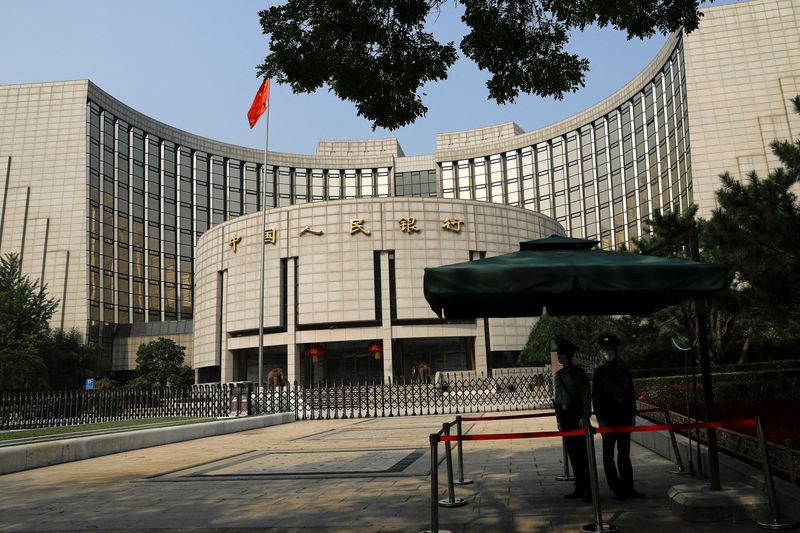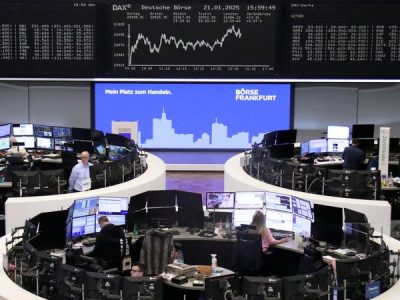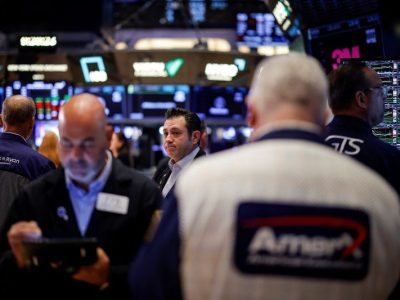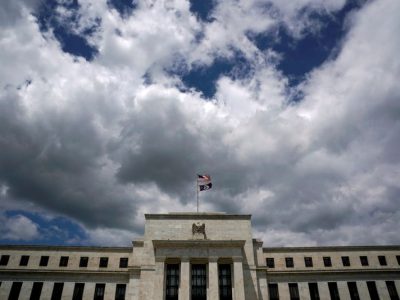
By Kevin Buckland
TOKYO (Reuters) – The Australian dollar hovered close to its highest level this year on Tuesday, with the central bank set to hold policy steady later and traders focussed on any hints of potential near-term easing.
The currency also got support from stimulus measures announced by the People’s Bank of China. Those measures weakened the yuan slightly in offshore trading.
The yen idled in the middle of recent ranges against the dollar ahead of a speech by Bank of Japan Governor Kazuo Ueda, which could provide clues about the pace of interest rate hikes, after the central bank signalled it was in no rush to tighten further.
The euro attempted to find its feet following a nearly 0.5% tumble overnight as weak business activity surveys pointed to additional rate cuts.
Sterling tracked close to a 2-1/2-year peak with the Bank of England last week striking a much less dovish posture than the Federal Reserve or European Central Bank.
The Aussie edged up to $0.6839 as of 0212 GMT, extending a 0.45% rally from the previous session, when it touched $0.6853 for the first time since Dec. 28.
The RBA is widely expected to keep rates steady on Tuesday, but economists and traders have taken opposing views on the potential for lower rates later this year. Of 44 economists polled by Reuters, only four predict a reduction by end-December, whereas traders put the odds at roughly 60% for a cut.
Meanwhile, People’s Bank of China Governor Pan Gongsheng announced on Tuesday a 50 basis point (bp) cut to banks’ reserve requirements, and signaled further easing in key lending rates.
“This is some pretty broad-based easing from China,” said Tony Sycamore, a markets analyst at IG.
“Once the RBA is out of the way, I think Aussie will catch a bid,” which could help it rally up to 70 U.S. cents by year-end, he added.
China’s yuan initially weakened about 0.16% in offshore trading after the announcement, but was last flat at 7.0590 per dollar.
The Japanese yen edged up to 143.495 per dollar, but remained close to the centre of its September range of 147.20 to 139.58, a more than one-year peak reached on Sept. 16.
The yen has retreated from that recent high amid waning bets for aggressive tightening by the BOJ, particularly after governor Ueda struck a cautious tone on Friday, saying the central bank would spend some time monitoring global growth risks.
The euro was little changed at $1.1105. A survey compiled by S&P Global showed euro zone business activity sharply contracted this month as the bloc’s dominant services industry flat-lined, while a downturn in manufacturing accelerated.
Sterling was flat at $1.33445. The BoE kept rates unchanged last Thursday, with its governor saying the central bank had to be “careful not to cut too fast or by too much”.












